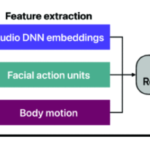2025-03-11 物質・材料研究機構,成蹊大学
<関連情報>
- https://www.nims.go.jp/press/2025/03/202503110.html
- https://www.nims.go.jp/press/2025/03/t87kp90000004hwo-att/202503110.pdf
- https://www.sciencedirect.com/science/article/abs/pii/S0378775325002629
高多孔性カーボンナノチューブ空気電極と低粘度アミド系電解液の組み合わせにより、高出力・高エネルギーのリチウム空気電池を実現 Highly porous carbon nanotube air-electrode combined with low-viscosity amide-based electrolyte enabling high-power, high-energy lithium-air batteries
Akihiro Nomura, Shota Azuma, Fumisato Ozawa, Morihiro Saito
Journal of Power Sources Available online: 9 February 2025
DOI:https://doi.org/10.1016/j.jpowsour.2025.236426
Graphical abstract

Highlights
- Highly-porous carbon nanotube sheet was developed as an air-electrode.
- Low-viscosity amide-based electrolyte reduced the internal resistance.
- Lithium-air battery with unprecedented high power (447 W kg−1) was demonstrated.
- High energy and power output specifically for drone hovering was demonstrated.
Abstract
Lithium-air batteries (LABs) develop high-energy-density battery storages, but the low-rate capabilities limit their practical applications. This study demonstrates an innovative approach for enhancing the power of LABs by integrating a highly porous carbon nanotube (CNT) air-electrode with a low-viscosity amide-based electrolyte. CNT air-electrodes with high surface area enable high-rate discharges, and increasing the electrode porosity allows for sustained discharges at high rates. Amide-based electrolytes with low viscosity, such as 1 M lithium nitrate (LiNO3) dissolved in N,N-dimethylacetamide (DMA) having a one-sixth viscosity of typical LAB electrolytes based on tetraethyleneglycol dimethylether (TEG) solvent, decreased cathode resistance by half by facilitating oxygen transport, enabling an ever-high current density discharge of 4.0 mA cm−2 to provide a capacity of 4.6 mAh cm−2 under dry air, i.e., ∼21 % oxygen atmosphere. Cell assembly suppressing electrolyte solvent evaporation produced high-power rechargeable LAB cells with a power density of 447 W kg−1, providing 447 Wh kg−1 of energy with respect to the total cell weight. This represents the first case of discharge–charge cycles of LABs with high power output specifically focused on drone hovering. The high-power, high-energy density LABs demonstrated in this study pave the way for developing ultra-lightweight aircraft batteries.



